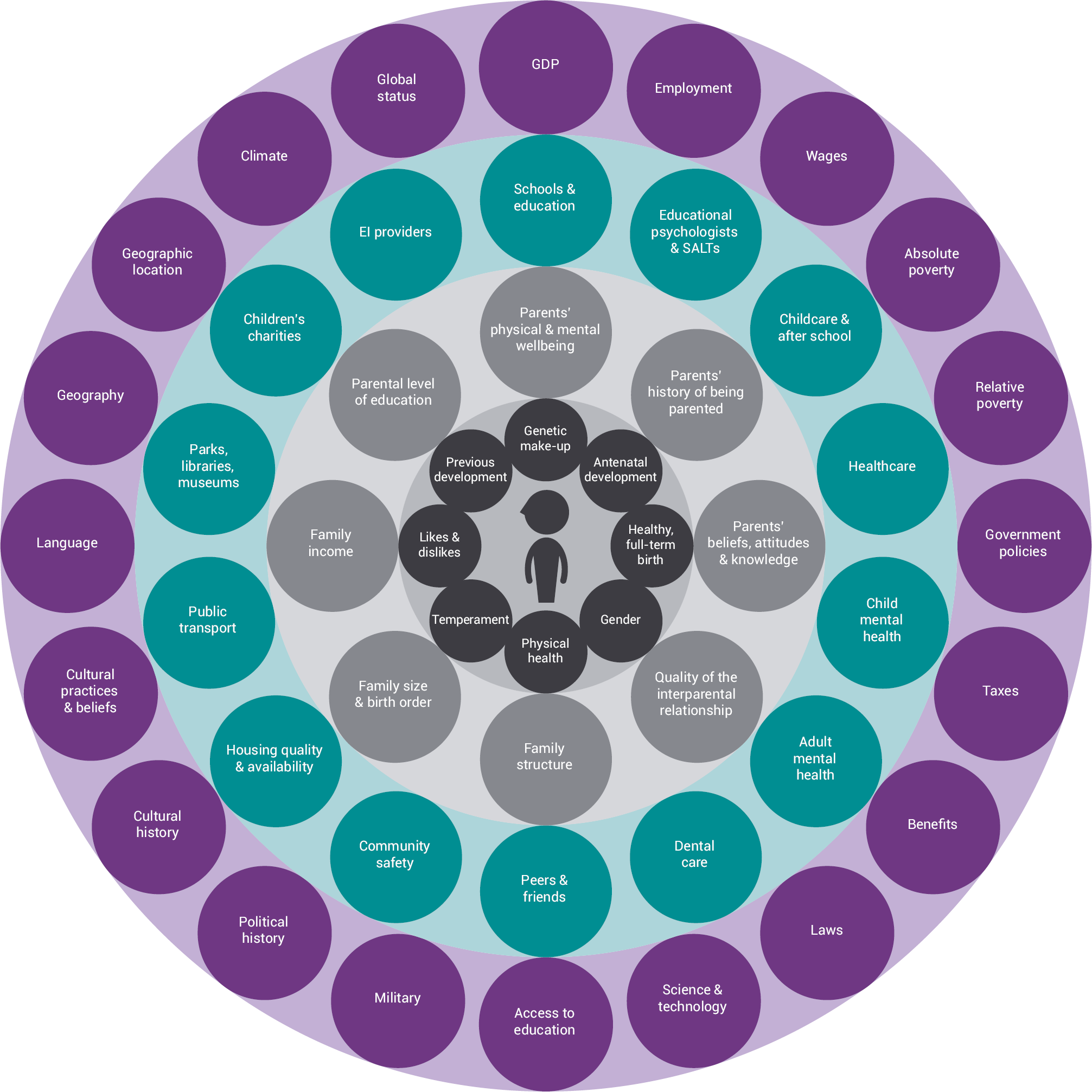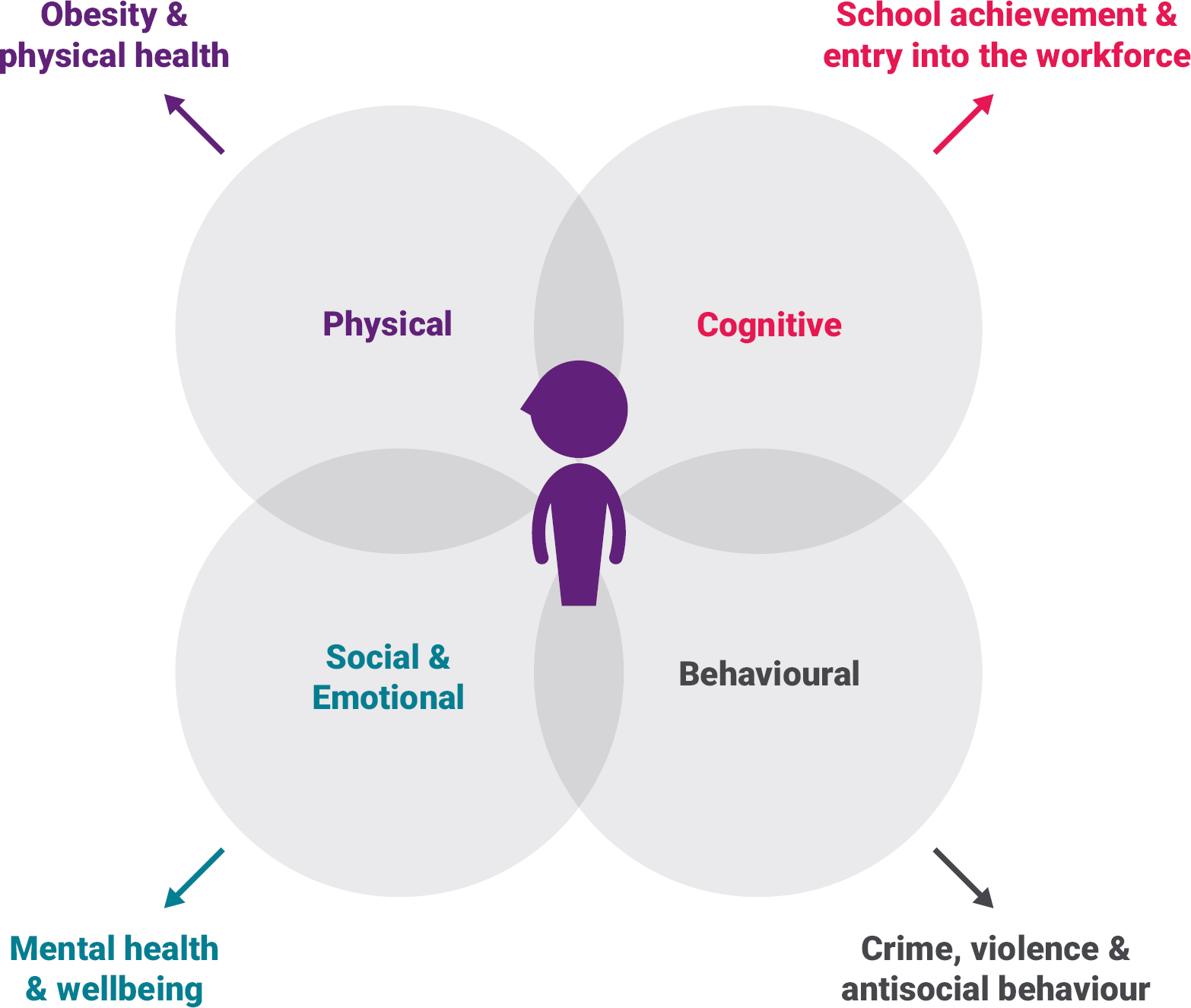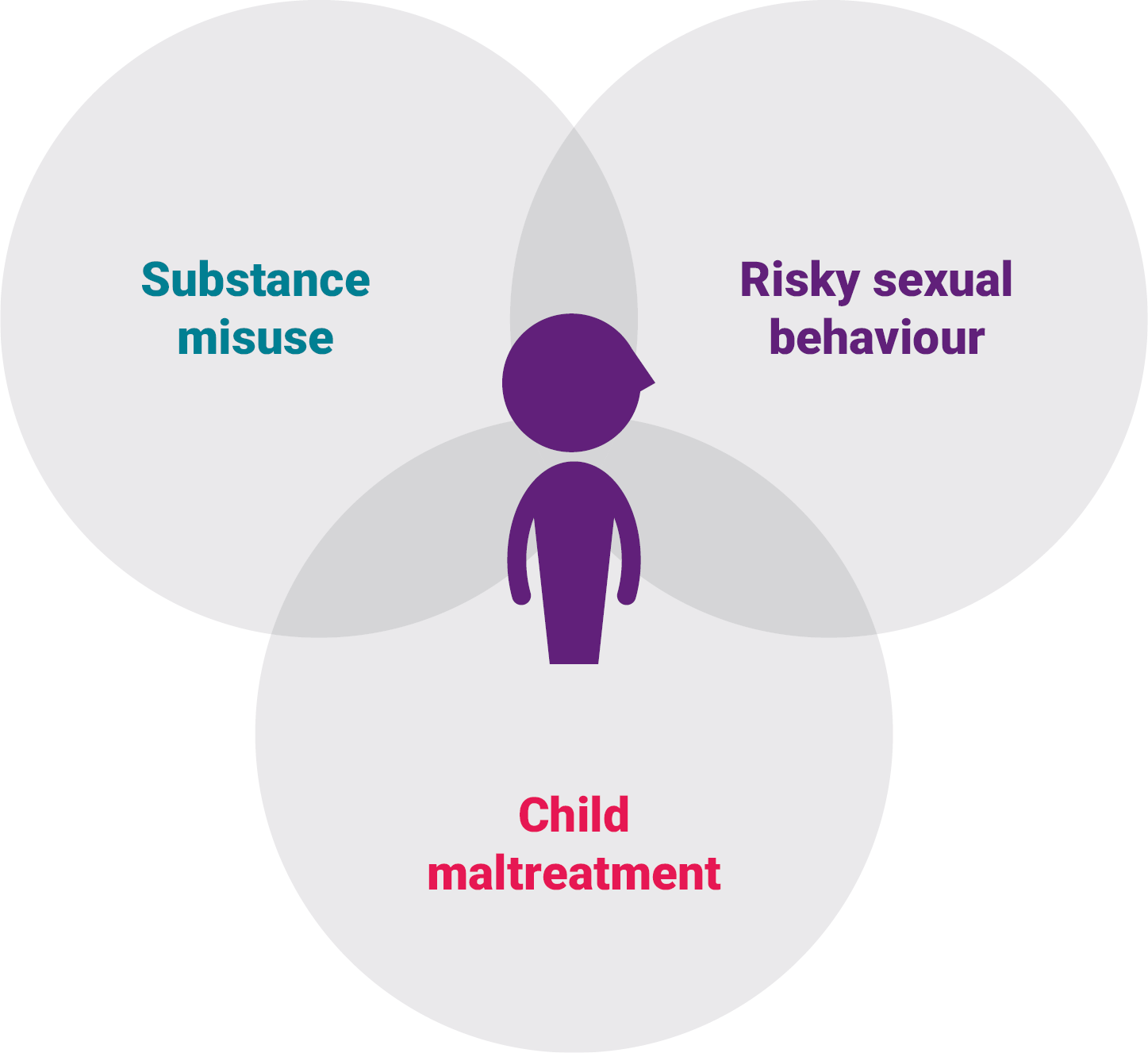Providing Early Intervention Information in the Family Language
Effective early intervention works to preclude bug occurring, or to tackle them head-on when they do, before problems become worse. Information technology also helps to foster a whole set up of personal strengths and skills that prepare a kid for adult life.
Early intervention can take different forms, from home visiting programmes to support vulnerable parents, to school-based programmes to meliorate children's social and emotional skills, to mentoring schemes for young people who are vulnerable to involvement in law-breaking. While some have argued that early intervention may take its strongest impact when offered during the commencement few years of life, the best prove shows that effective interventions can improve children's life chances at whatever point during childhood and adolescence.

How does information technology work?
Early intervention works to reduce the take a chance factors and increase the protective factors in a child's life.
Nosotros have a good understanding of the risk factors that can threaten children's development, limit future social and economic opportunities, and increase the likelihood of mental and physical wellness bug, criminal involvement, substance misuse, or exploitation or abuse in afterward life. These factors exist at different levels inside the child'southward environs – at the private, family, community and society level – and interact in complex ways.

Protective factors are the characteristics or conditions of individuals, families, communities and society that can mitigate these risks and increase the health and wellbeing of children and families. In many cases, risk and protective factors are ii sides of the same coin: for example, poor parental mental health may pose a risk to a child's good for you development, while good parental mental wellness may provide a protective factor against other negative outcomes, such as behavioural problems or poor bookish attainment.
These risk factors are non deterministic or predictive at an individual level: they cannot tell us exactly which child or immature person will need assistance. Only they can assist united states to place children who are vulnerable and who may demand actress support. Studies show that early intervention works best when it is made available to children on the ground of pre-identified risks.
Universal or targeted?
Many families demand more than support than is available through universal services, such as schools and GPs. Early on intervention works best when it targets particular families or individuals, on a selective or indicated basis.
- Targeted selective interventions are offered to families on the ground of broad demographic risks, such as low family income, single parenthood, boyish parenthood or ethnic minority condition. Although children growing up in these circumstances may not be suffering any specific bug, interventions that select families on the basis of these kinds of risks have the potential to keep more than serious issues from occurring.
- Targeted indicated interventions are offered to families who have been identified as having a specific or diagnosed problem requiring more intensive back up. In these cases, early intervention tin can no longer prevent bug from occurring, but has the potential to help in treating the problems and minimising or reversing long-term impacts on a child'due south evolution.
As early intervention moves upwards the calibration from universal to targeted selective to targeted indicated, interventions become more than intensive, and are offered to a smaller grouping of families.
What tin can early intervention accomplish?
Early intervention approaches frequently focus on supporting four central aspects of child evolution – their physical, cognitive, behavioural, and social and emotional development – where it has the potential to make the biggest difference and provide benefits throughout a person's life.

- Concrete development involves children's physical health, maturation and the presence or absenteeism of a physical inability, and information technology provides the footing for positive development in all other areas. Physical outcomes targeted by early on intervention activities include improving birth outcomes, reducing the incidence of infectious diseases and decreasing childhood obesity.
- Cognitive evolution includes children'south conquering of speech and language skills, their ability to read and write, their numeracy capabilities and their understanding of logical problem-solving. Positive cognitive development is strongly associated with a child's success in school and entry into the workforce. Cognitive outcomes typically targeted by early intervention include performance on standardised tests, school achievement, and higher education and employment opportunities one time they leave schoolhouse.
- Behavioural development involves children's ability to monitor and regulate their ain behaviour, attending and impulses. Children'due south self-regulatory skills are highly associated with their power to grade positive relationships with others, as well as their success in school. Behavioural self-regulation difficulties during childhood are highly predictive of children's interest in criminal activity during the teenage years and machismo. Behavioural outcomes frequently targeted past early on intervention include reducing hating behaviour and crime, violence and aggression at school, and amalgamation with antisocial peers.
- Social and emotional development involves children's awareness of their own emotional needs and the emotional needs of others. Social and emotional development too encompasses the evolution of children'southward self-esteem and their ability to manage negative feelings. Social and emotional development is strongly associated with a child's ability to form positive relationships with others and a reduced risk of depression and other mental wellness outcomes. Early on intervention outcomes associated with children's social and emotional development include increasing pro-social behaviour, improving self-esteem and reducing the incidence of clinically diagnosed mental health problems.
Early intervention also targets three fundamental additional 'threats' to a child's development which are strongly associated with adverse outcomes during adolescence and machismo: child maltreatment, substance misuse and risky sexual behaviour.

Source: https://www.eif.org.uk/why-it-matters/what-is-early-intervention
0 Response to "Providing Early Intervention Information in the Family Language"
Post a Comment